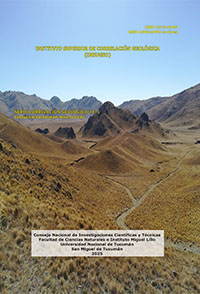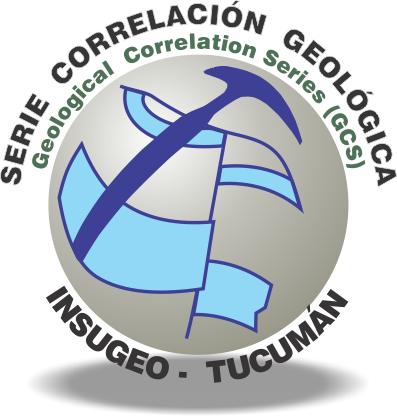Serie Correlación Geológica 41 (1)
Geología y geoquímica de la composición elemental de la fosforita uranífera en la franja sedimentaria cretácica cercana a Berlín, Caldas (Colombia)
Sonia Yanira Güiza González | German Vargas Cuervo
Descargar trabajo en formato PDFResumen
GEOLOGY AND GEOCHEMIST ELEMENTAL COMPOSITION FROM URINIFEROUS PHOSPHORITE IN THE CRETACEOUS SEDIMENTARY BAND NEAR TO BERLÍN, CALDAS (COLOMBIA). The cretaceous sedimentary sequence of Berlin in the Eastern flank from Colombia Cordillera Central, bearing the uriniferous phosphorite in, which has been qualified as deposit containing as commodities primarily such as uranium and yttrium, also metals such as vanadium, silver, molybdenum, and nickel, included in this study among others (rhenium and neodymium). Geological mapping was reviewed using remote sensing, and the geochemist about elemental composition of the participants during geochemical dispersion process, establishing that recent material like sediments collected in the hydrographic system crossing the Cretaceous sedimentary band. Due to the uranium geochemist anomalies focused to the south where the synclinal closed, the litho-samples (parental material) were collected following transverses lines and taking gamma-spectrometric measures, At first uriniferous geochemical anomalies identified were focused at the closure of the syncline at the south, then followed transects lines with in-field gamma spectrometry measurements for the selection of lithological samples used as parent material. Both samples (sediments and litho-samples) were analyzed by ICP-OES instrumental chemists. Then the elemental chemist results were statistical processing, besides the geochemical anomalies identified in sediments, it matched the geochemical fingerprint from the outcropping materials with high radioactive emission. The results show that uriniferous phosphorite, together with pyrite and other sulfurs into the shales sequence and other sulfides, which play as the main parental materials for elements such as uranium, rare earth elements, and metals, without excluding other lithological units highlighting igneous rocks, and anthropogenic activities with tendency to remove vegetal cover. If the protective barrier provided by vegetation cover is destroyed, the natural balance with the underlying rock substrate could endanger. So, it is necessary to assess environmental risks associated with the mobilization of heavy metals such as selenium, arsenic, antimony, cadmium, and lead, including the presence of radon frequently.
Abstract
La franja sedimentaria cretácica de Berlín en el flanco oriental de la Cordillera Central de Colombia, hacia la base de la secuencia existe un estrato llamado fosforita uranífera, catalogado como depósito mineral con elementos de interés económico tipo tierras raras, el uranio e itrio y metales como el vanadio, plata, molibdeno y níquel los cuales hacen parte de este estudio, entre otros (renio y neodimio). Se revisó la cartografía geológica aplicando teledetección y la geoquímica respecto a la composición elemental de los componentes que participan en un proceso de dispersión geoquímica, determinando que el material reciente corresponde a los sedimentos tomados a lo largo del sistema hídrico que atraviesa la franja sedimentaria cretácica. Teniendo en cuenta que las anomalías geoquímicas uraníferas se ubican en el cierre del sinclinal al sur, se llevó a cabo transversas con mediciones espectrometría gamma de campo y selección de lito-muestras (material parental). Se evidencia que la fosforita uranífera, junto con la secuencia lutitica con presencia de pirita y otros sulfuros, actúan como principales materiales parentales de elementos como el uranio, otras tierras raras, y metales, sin descartar que estos pueden provenir de otras unidades litológicas como las rocas ígneas principalmente, y actividades antrópicas proclives a destruir la cobertura vegetal. Se destaca la necesidad de evaluar los riesgos ambientales asociados a la movilización de metales pesado como el selenio, arsénico, antimonio, cadmio y plomo, incluyendo la presencia de radón que de destruir la barrara que ejerce la cobertura vegetal, se colocaría en riesgo el equilibrio natural existente con el sustrato rocoso donde habitan.






